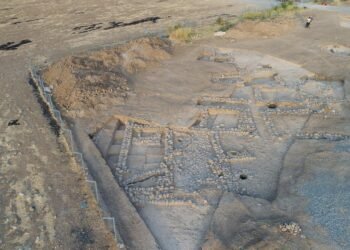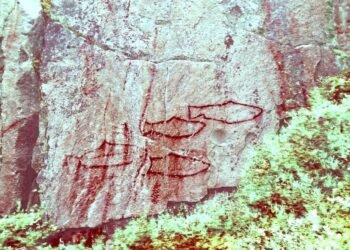Archaeologists from the University of Bologna have uncovered a significant new princely tomb in the Corinaldo Necropolis, located in the Ancona province of Italy. This discovery follows the notable 2018 find of the “Prince of Corinaldo.”
The excavation, led by Dr. Cecilia Carlorosi and Ilaria Venanzoni, revealed a quadrangular tomb situated at the center of a large circular pit. The tomb, measuring approximately 3.8 by 2.2 meters, contained over 150 ornate artifacts, including a two-wheeled chariot, a bronze helm, cauldrons, and finely decorated vessels. These items suggest the presence of a funerary banquet, indicating that the tomb’s occupant was a high-ranking individual of considerable importance.
The burial site dates back to the 7th century BCE and is associated with the Picentes, an ancient Italic people who lived along the Adriatic coast from the 9th to the 3rd century BCE. The Picentes were known for their trading relationships with neighboring cultures, including the Etruscans, as evidenced by several Etruscan-origin artifacts found within the tomb.
The Corinaldo Necropolis, located in the town of Nevola, has been an active archaeological site under the ArcheoNevola Project since 2018. This project is directed by the University of Bologna’s Department of History, Culture, and Civilization in collaboration with the Municipality of Corinaldo and the Superintendent of Archaeology Fine Arts and Landscape for the provinces of Ancona and Pesaro Urbino.
Recent findings include a large circular ditch with an original diameter of 30 meters, housing the quadrangular tomb. Among the discovered artifacts are skewers, an iron ax for cutting meat, and various pottery items for serving food and drinks, all indicative of a funerary banquet. These findings highlight the tomb’s owner as a celebrated figure of the highest social order.
Mayor Gianni Aloisi of Corinaldo stated: “Corinaldo can now claim the title of ‘land of the princes.’ This discovery confirms the historical and cultural value of the Nevola archaeological area and allows us to know, and perhaps rewrite, the history of our community.”
The Picentes, primarily concentrated in Novilara in the north and Belmonte in the south, were a wealthy people with extensive trading links. Their territory, known as Picenum, was eventually annexed by Rome in 268 BCE. The artifacts found in the tomb reveal the aristocratic lifestyle of the Picentes, reflecting their daily routines, habits, and connections with Etruscan culture.
The recent discoveries will be presented to the public, with a visit to the excavation site, emphasizing the educational and historical value of the Corinaldo Necropolis. Mayor Gianni Aloisi added that once the artifacts are consolidated and restored, they will be displayed in a museum area accessible to the public.






















